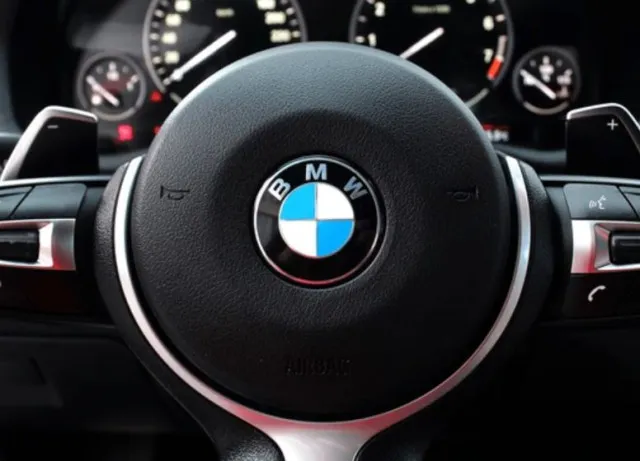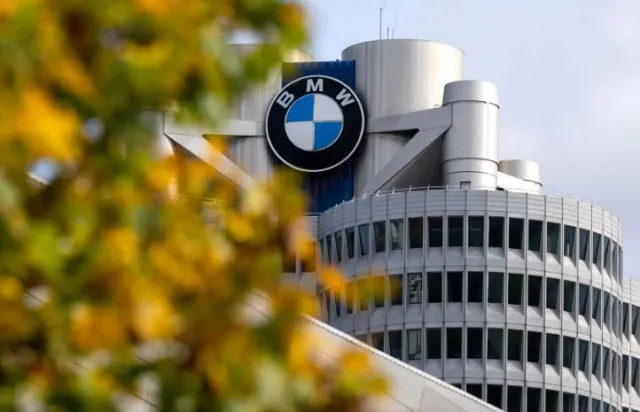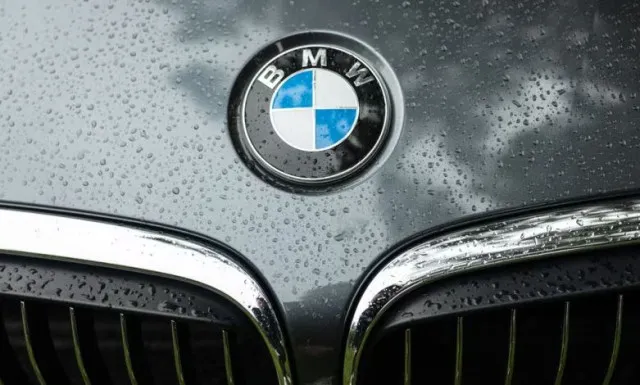BMW is a name that immediately brings luxury, performance, and precision engineering to mind. Whether you’re a car enthusiast or just an average driver, it’s hard to miss the impact BMW has had on the automotive world. But despite its widespread recognition, many people don’t know what BMW actually stands for or the rich history behind the brand. In this article, we’ll dive into what BMW means, explore its origins, and unravel the fascinating story of its logo and evolution.

BMW stands for Bayerische Motoren Werke, meaning Bavarian Motor Works. Image Credits: Getty
What Does BMW Stand For?
BMW stands for Bayerische Motoren Werke, which translates to Bavarian Motor Works in English. The name reflects the company’s roots in Bavaria, a southern state in Germany, where its headquarters are still based in Munich. BMW is much more than just an acronym; it represents over a century of innovation, craftsmanship, and leadership in both aviation and automotive engineering.
However, BMW didn’t start with the name that we know today. Initially, the company was called Bayerische Flugzeugwerke AG, or Bavarian Aircraft Works, and as the name suggests, it focused primarily on producing aircraft engines. The shift to a broader range of motor vehicles came later, but the company’s connection to aviation would remain deeply ingrained in its identity.
The Evolution of BMW’s Logo: More Than a Propeller
BMW’s logo is iconic—a round, sleek design with alternating blue and white sections. But despite its simplicity, the meaning behind it is often misunderstood. A popular belief, fueled by early advertisements, is that the logo represents a rotating propeller, symbolizing BMW’s early involvement in aircraft engine manufacturing. While this story is appealing and connected to the company’s history, it’s not entirely accurate.
The true inspiration behind the logo lies in the colors of the Bavarian flag, which features a blue and white diamond pattern. When BMW designed its logo in 1917, laws prohibited the direct use of state symbols for commercial purposes. To work around this, BMW used the Bavarian colors in its logo without replicating the flag itself. This creative nod to its Bavarian origins has become a timeless part of the brand’s identity.
From Aircraft Engines to Automobiles
BMW’s roots in aviation are undeniable. In fact, during World War I, the company gained a reputation for producing high-quality aircraft engines. However, following the war, the Treaty of Versailles restricted German companies from manufacturing military aircraft. This led BMW to pivot toward other forms of transportation, such as motorcycles and eventually cars.
World War II and a Difficult Transition
BMW’s journey through World War II was far from smooth. During the war, the company resumed production of aircraft engines, this time for military purposes. However, after Germany’s defeat in 1945, BMW faced a new challenge. With the war over, the demand for military engines evaporated, and the market for luxury cars was also virtually nonexistent due to the economic difficulties of post-war Europe.

As BMW struggled to find its footing, the company faced a tough decision: either adapt or fade into obscurity. The solution came in the form of a strategic shift toward the production of sporty yet affordable cars. This move would ultimately redefine the brand and pave the way for its success.
The Birth of the Iconic 2002 Turbo
The 1960s marked a turning point for BMW. It was during this time that the company began producing vehicles that appealed to a broader market. One of the most notable models to come out of this era was the 2002 Turbo, a high-performance car that became synonymous with BMW’s reputation for speed, precision, and driving pleasure.
The success of the 2002 Turbo helped establish BMW as a leader in the performance car segment, further separating the brand from its aviation roots and cementing its place in the automotive world. This was a time when BMW started being recognized not just for luxury but also for the thrill of driving.

During World War Two, BMW produced engines for the German war effort. Image Credits: Getty
BMW’s Global Legacy: Luxury Meets Performance
Fast forward to today, and BMW has become one of the top automotive brands worldwide. Ranked as the ninth largest automaker globally, BMW now sells over two million vehicles every year. From the classic 3 Series to the cutting-edge i8, the company has expanded its offerings to include a wide range of models, from sports cars to electric vehicles, all while maintaining its commitment to performance and innovation.
What sets BMW apart is its ability to blend luxury with high performance. Whether you’re driving a BMW sedan, an SUV, or a roadster, you’re experiencing a brand that’s designed to offer a premium experience on every level. BMW vehicles are known for their advanced engineering, meticulous attention to detail, and focus on delivering a dynamic driving experience.

BMW shifted to making accessible sportier cars after World War Two. Image Credits: Getty
Beyond Cars: BMW’s Commitment to Innovation
BMW’s influence extends beyond the vehicles it produces. The company is at the forefront of automotive technology, pushing the boundaries of what’s possible in design, safety, and sustainability. BMW has made significant strides in electric and hybrid technology, positioning itself as a leader in the development of eco-friendly cars that don’t sacrifice performance.
Additionally, BMW’s i Series of electric vehicles, including the i3 and the i8, demonstrate the company’s commitment to reducing its environmental impact while continuing to offer the luxury and driving performance that customers expect.
A Rich History and a Promising Future

BMW is now the ninth largest automaker, selling over two million cars annually. Image Credits: Getty
BMW’s journey from an aircraft engine manufacturer to one of the most prestigious car brands in the world is nothing short of extraordinary. The company’s ability to evolve and adapt over time is a testament to its resilience and vision. Today, BMW is more than just a car manufacturer—it’s a symbol of excellence, innovation, and craftsmanship that resonates with drivers around the world.
Conclusion: The Symbol of Bavarian Excellence
So, what does BMW stand for? While the acronym translates to Bavarian Motor Works, it represents much more. It’s a symbol of Bavarian ingenuity, an evolution from aircraft engines to luxury cars, and a global brand that continues to lead the automotive industry in performance, innovation, and design. Every time you see the BMW logo, you’re looking at more than just a company that builds cars—you’re witnessing a legacy of engineering excellence and a dedication to the ultimate driving experience.


